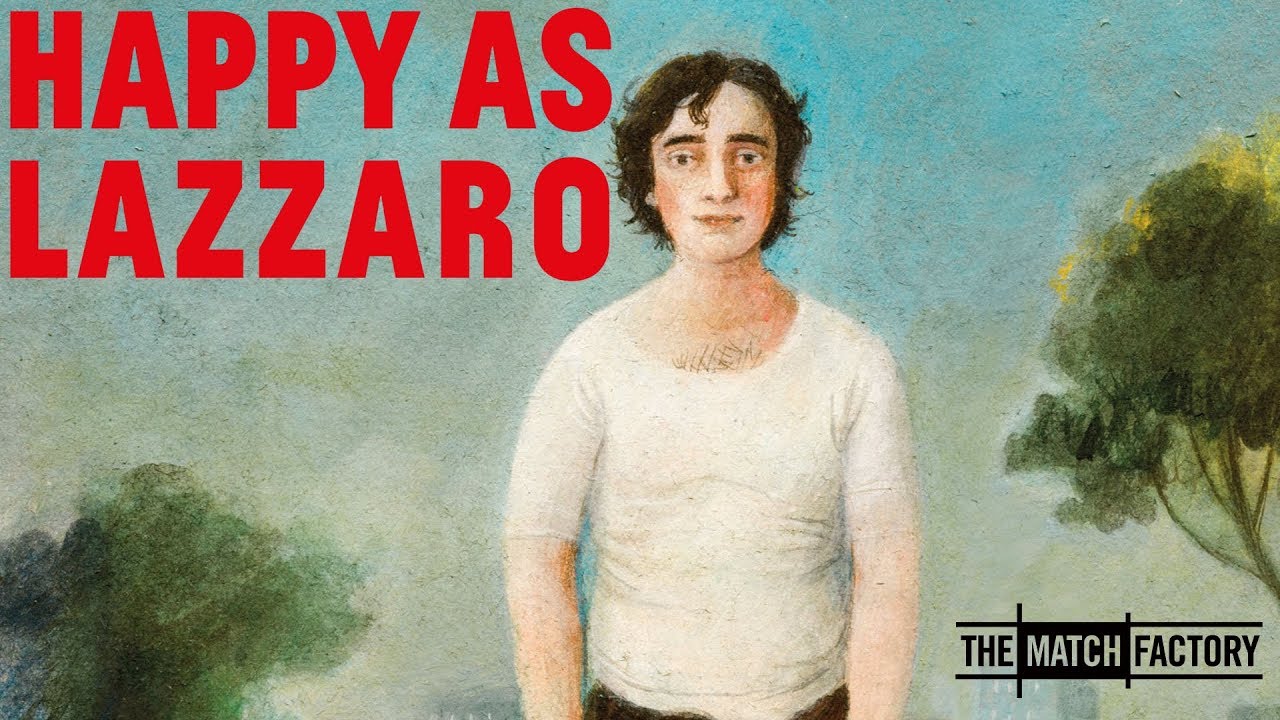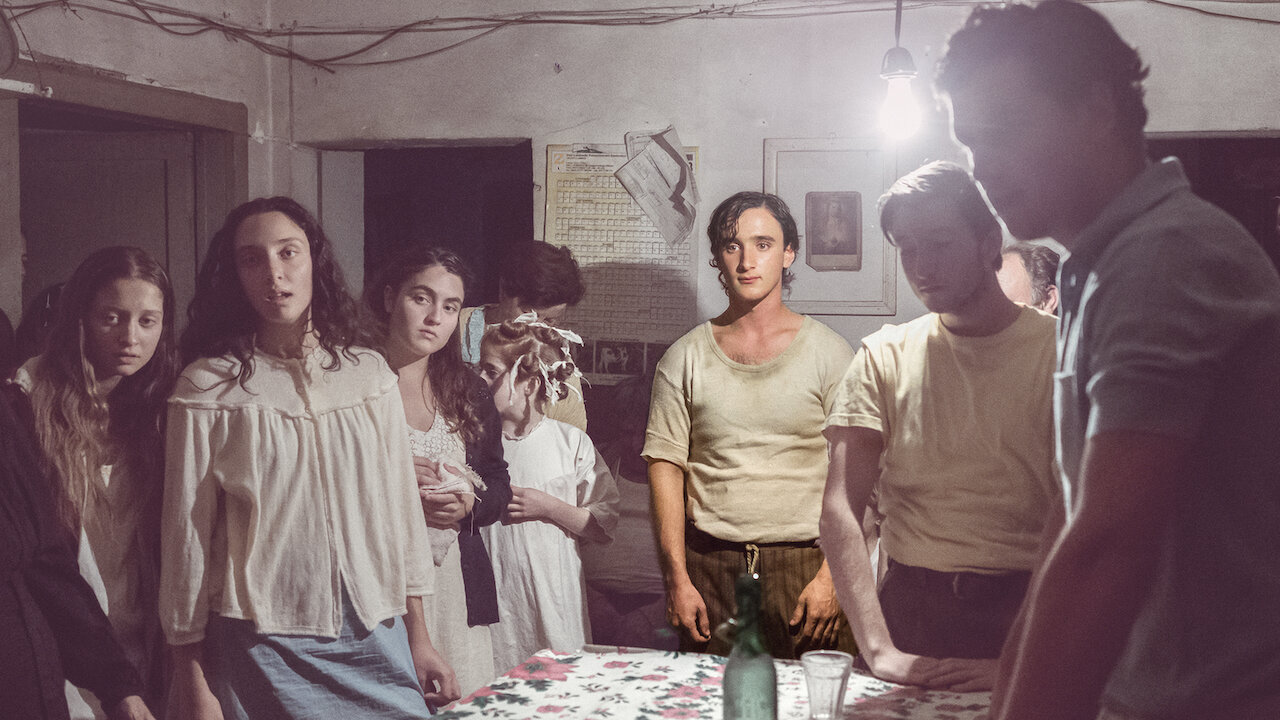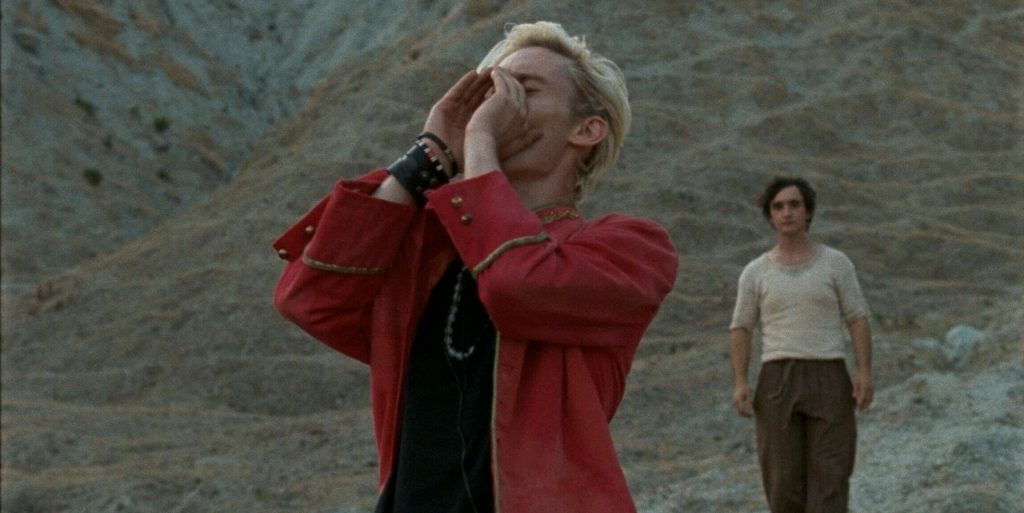Happy as lazzaro (2018)

Happy as Lazzaro (2018), directed by Alice Rohrwacher, is an Italian drama film that blends social commentary with a touch of magical realism. The film received widespread acclaim for its unique storytelling and thematic depth. Here’s a detailed review:
Plot Summary
Happy as Lazzaro follows the life of Lazzaro (Adriano Tardiolo), a naive and kind-hearted young man who lives in a remote Italian village called Inviolata. The village is run by the wealthy Marchesa Alfonsina de Luna (Nicoletta Braschi), who exploits the villagers for her own gain while keeping them in a state of servitude. Despite their harsh conditions, Lazzaro remains cheerful and selfless.
The plot takes a significant turn when Lazzaro befriends Tancredi (Luca Chikovani), the Marchesa’s son, who is planning to stage his own kidnapping to escape the village’s drudgery. When the ruse is successful, Tancredi leaves, and Lazzaro is left behind. The story then shifts to a surprising twist involving Lazzaro’s journey into the modern world, exploring themes of time, social class, and innocence.
Key Strengths
- Unique Narrative and Magical Realism:
- The film’s narrative blends realism with magical elements, creating a unique and enchanting story. The juxtaposition of Lazzaro’s innocence with the harsh realities of the village and the modern world adds depth and intrigue. The magical realism enhances the film’s thematic exploration of societal issues and human nature.
- Strong Performances:
- Adriano Tardiolo delivers a standout performance as Lazzaro, embodying the character’s purity and simplicity with sensitivity and depth. Nicoletta Braschi also provides a memorable performance as the manipulative Marchesa. The supporting cast contributes effectively to the film’s emotional and social commentary.

- Adriano Tardiolo delivers a standout performance as Lazzaro, embodying the character’s purity and simplicity with sensitivity and depth. Nicoletta Braschi also provides a memorable performance as the manipulative Marchesa. The supporting cast contributes effectively to the film’s emotional and social commentary.
- Cinematic Style and Direction:
- Alice Rohrwacher’s direction is both thoughtful and evocative. The film’s cinematography captures the beauty of the rural setting and contrasts it with the starkness of modern urban life. Rohrwacher’s use of visual storytelling and symbolism adds layers of meaning to the narrative.
- Social Commentary:
- Happy as Lazzaro offers a poignant critique of social inequality and exploitation. The film explores themes of class disparity, innocence, and the impact of societal structures on individual lives. The depiction of the villagers’ exploitation and Lazzaro’s subsequent journey provides a powerful commentary on human dignity and social justice.
- Emotional Impact:
- The film’s blend of tenderness and melancholy creates a powerful emotional experience. Lazzaro’s journey from innocence to a more complex understanding of the world is both touching and thought-provoking.

- The film’s blend of tenderness and melancholy creates a powerful emotional experience. Lazzaro’s journey from innocence to a more complex understanding of the world is both touching and thought-provoking.
Weaknesses
- Pacing:
- The film’s pacing may feel slow to some viewers, particularly in its more contemplative and introspective moments. The leisurely pace can impact the overall engagement for those accustomed to faster-moving narratives.
- Abstract Elements:
- The magical realism and symbolic aspects of the film may be challenging for some viewers to interpret. The abstract nature of certain plot points and thematic elements can leave some audience members puzzled or disconnected.
- Plot Development:
- While the film’s narrative is rich and layered, some plot developments might feel abrupt or underexplored. The transition between the rural and modern settings can be jarring and may require viewers to piece together the significance of certain events.

- While the film’s narrative is rich and layered, some plot developments might feel abrupt or underexplored. The transition between the rural and modern settings can be jarring and may require viewers to piece together the significance of certain events.
- Limited Appeal:
- The film’s art-house style and thematic depth may not appeal to all audiences. Its contemplative and symbolic nature may be more appreciated by viewers interested in nuanced and unconventional storytelling.
Conclusion
Happy as Lazzaro is a visually captivating and thought-provoking film that blends magical realism with social commentary. Alice Rohrwacher’s direction, along with strong performances and a unique narrative approach, makes the film a compelling exploration of innocence, exploitation, and societal disparity. While the film’s pacing and abstract elements may not suit all viewers, it offers a rich and emotionally resonant experience for those interested in innovative storytelling and thematic depth.











